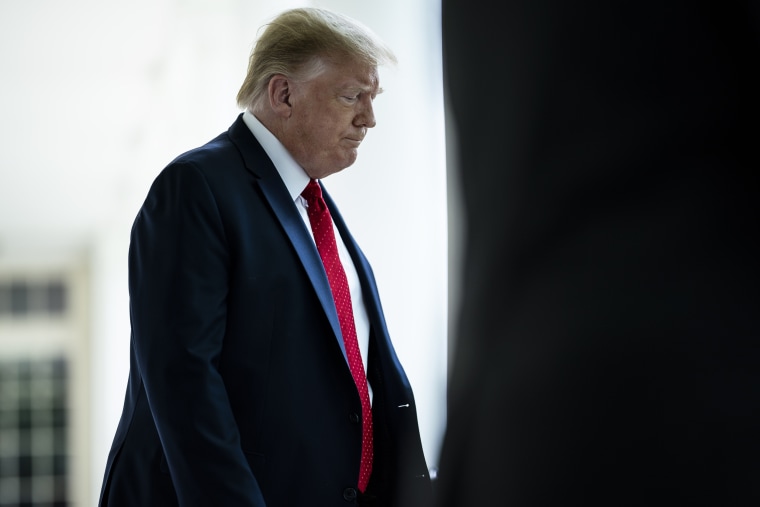This is a good moment, however fleeting, for the rule of law. The U.S. Supreme Court held that the Trump administration’s decision to end the Deferred Action for Childhood Arrivals program (known as DACA) was arbitrary and capricious and therefore violated federal law. DACA stands, for now.
But for those of you celebrating the decision, here I am again, raining on your parade. There are a few important caveats to this case. First, the administration still has the power to end DACA; it just needs to give a better reason for doing so. Second, this is still a story of Congress’ failure to act to protect young people who were brought to the United States as children and lack legal status to remain in the country without fear of deportation.
For those of you celebrating the decision, here I am again, raining on your parade. There are a few important caveats to this case.
Back to the good news, for a moment. The practical implications of the case are huge. Nearly a million people living, working, paying taxes and raising families in our country will be protected from deportation and able to obtain work authorizations and health insurance.
The legal implications of the case are also significant and largely positive. In a splintered opinion, a thin majority of the court led by Chief Justice John Roberts concluded that the Trump administration, and specifically the Department of Homeland Security, failed to give adequate reasons for its decision to wind down DACA. In a nutshell, this means at least five members of the Supreme Court are willing to do their jobs and properly apply federal law to stop some of the overreaches of the Trump administration.
It would seem the law won today, and so did Americans. But the reality is slightly more complex.
DACA is an eight-year-old program created by executive order by President Barack Obama in June 2012. And herein lies the legal and political problem. DACA protects qualified individuals known as Dreamers from deportation, allows them to obtain work authorization, Social Security, Medicare and other benefits. Individuals qualify as Dreamers if they are in school, have graduated from high school or its equivalent, or have served in the military, and have not gotten into any significant criminal trouble.
Obama tried and failed to convince Congress to act. Indeed, Obama described DACA as a temporary stopgap, meant to bridge the gap before Congress enacted legislation.
But the legislation never came.
Instead, lawmakers dodged their responsibility, and left the obligation of whether and how to protect Dreamers to executive order.
Lawmakers dodged their responsibility, and left the obligation of whether and how to protect Dreamers to executive order.
And then we got a new president, Donald Trump. After pressure from Republican governors and attorneys general, Trump announced that he would wind down or rescind DACA. Trump put pressure on Congress to find a legislative compromise for Dreamers and other similarly situated individuals. But again Congress failed to act.
And so in the wake of yet another congressional failure, the Trump administration, and specifically the Department of Homeland Security, pushed forward with its plan to end DACA. Then-Attorney General Jeff Sessions concluded that Obama’s creation of DACA by executive order was itself unconstitutional and would subject the federal government to litigation by having to defend the program.
The case arriving before the Supreme Court raised two separate issues. First, is the Department of Homeland Security’s decision to end DACA even subject to review by judges? The court answered that question in the affirmative. Second, has the Trump administration sufficiently explained why it wants to end DACA? A bare 5-4 majority of the court answered this question in the negative, concluding that the way the Trump administration tried to end DACA violates a federal law, the Administrative Procedure Act.
The act stands as protection against executive agencies run amok. It requires that executive agencies give a “satisfactory explanation for its action.” Put another way, federal agencies cannot act in a manner that is arbitrary and capricious. This doesn’t sound like too much to ask of the federal agencies, and it isn’t.
After oral arguments before the Supreme Court in November, it appeared that Chief Justice John Roberts would be the swing vote. And he was. This current court is closely divided along ideological lines, with Roberts listing toward the center. As we suspected, the case boiled down to whether he believed the reasons the Trump administration gave for ending DACA. He did not.
Federal law requires federal agencies to give real reasons for their actions — and Roberts has stated that that law still acts as a guard against agencies that seek to lie and obfuscate.
But this is not the end of road. The Trump administration can seek to end DACA by providing new, better reasons. It seems unlikely that it will attempt to end an overwhelmingly popular program during an election year. So let’s end where we began. The Supreme Court, albeit a bare majority, upheld the rule of law. They gave teeth to a federal law that acts as a guard against executive agencies who act without sufficient reason to do so. In doing so, they protected the hundreds of thousands people who live, work and pay taxes in our country. Whether those people stay protected remains to be seen.


